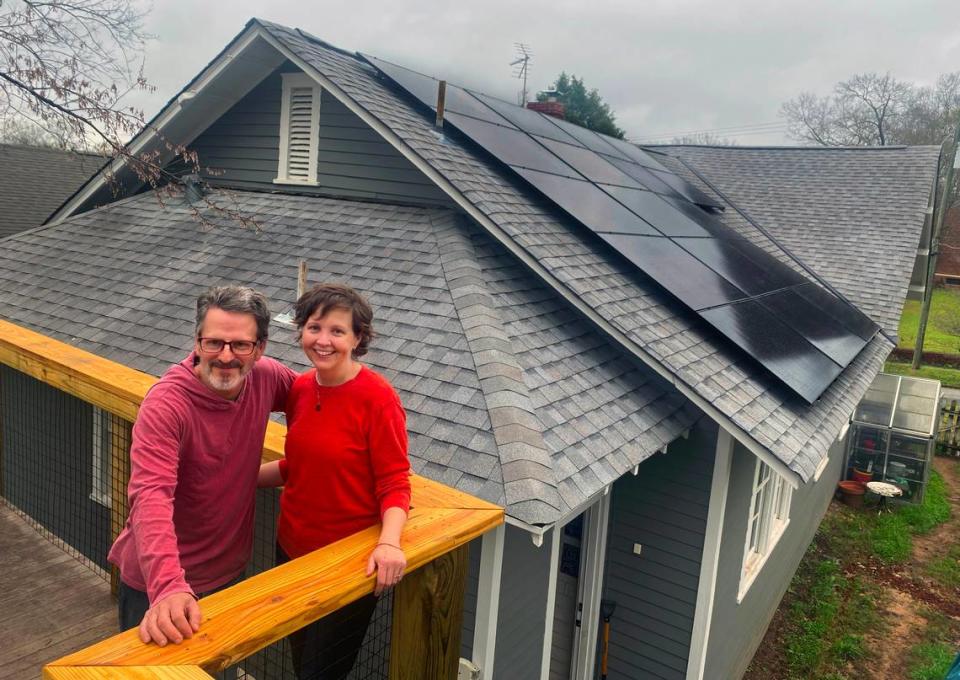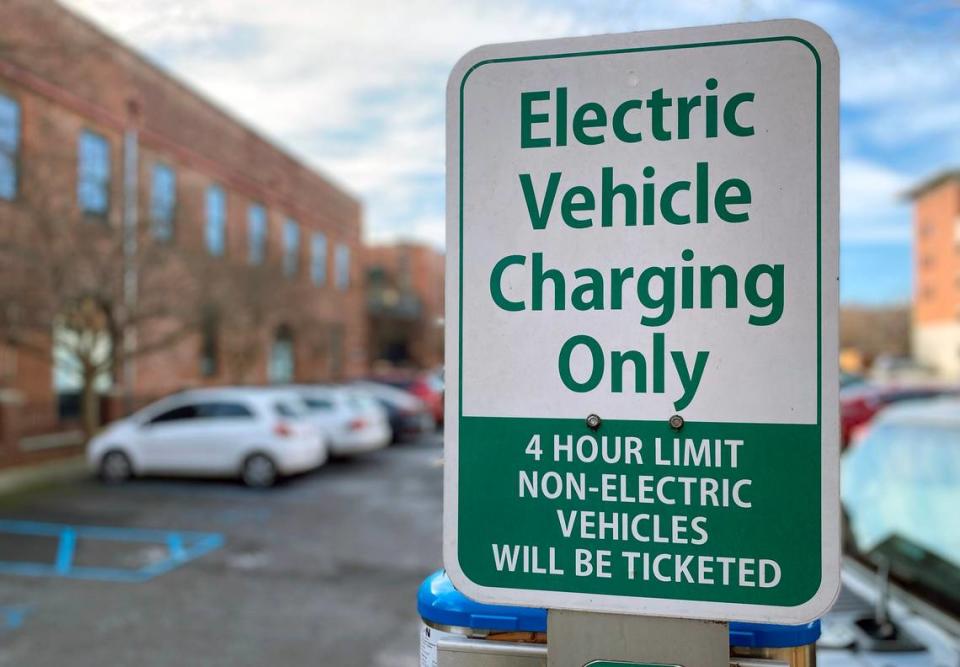Here are 7 things you can do right now to save money & help climate change in Columbus
When the world’s leading scientific body utters the words “code red for the planet”, or Miami has its hottest May ever with 110-degree “feels like” temperatures, does it motivate you into action, or paralyze you with fear?
For the 51% of readers out there who are unsure of where to start when it comes to doing something about unprecedented greenhouse gas emissions and planetary warming, we broke down seven high-impact action items you can take.
1. Reduce Food Waste
According to Project Drawdown, the leading resource for climate solutions, the most impactful action an individual can take is to reduce food waste.

Planning and re-evaluating product dating and prepping foods right after shopping is a good start. The food that is tossed away ends up in landfills and produces methane, the most potent greenhouse gas. Methane is 27 times more potent than carbon dioxide or has a 27 global warming potential equivalent.
The food wasted in Georgia equates to 8.3 megatonnes of CO2, nearly the amount of emissions that come from the state’s highest Coal Power Plant, Plant Bowen, which emits 7.93 megatonnes a year.
Eating what is in season from farmers cuts down on waste as well. Learn more about seasonal eating and Columbus’ Uptown Market’s goals in this article: “Columbus Uptown Market shoppers are asking for more local produce. Can it deliver?”
Learn more about groups and programs that are combating food waste in Columbus and throughout Georgia in this article: “Reducing household food waste is the best climate action Georgians can take. Here’s why.”
2. Eat More Plants
Technically tied to reducing food waste, by greenhouse gas offsetting potential, the other highest impact individuals can make is to eat more plants.
Eating plants is not only healthier for you but also healthier for the planet. Consuming meat, especially beef, lamb, or pigs consequently causes tons of greenhouse gasses to be released into the atmosphere. This occurs via raising the livestock as they emit methane during their digestion and changes to the land.

Climate action and solution hub in Georgia, Drawdown Georgia, found a 25% reduction in state-wide meat consumption (that is skipping meat for about two days a week) could reduce one megaton of CO2e. That is the same as removing 222,530 vehicles from the road that drive for one year.
Learn more about groups and programs that are participating in vegetarian and plant-based dinners in Columbus in this article, “Columbus farmer inspires locals to take control of their food, build healthy community”
3. Rooftop Solar
If eating more plants and cutting out beef isn’t in your realm of considerations, decarbonizing where your energy comes from, and switching to clean energy might be the best action for you.
There has never been a better time to audit your home for rooftop solar. “The average home in Georgia uses about 40 kWh of electricity per day. Which means that in ideal conditions you need just 800 sq ft of rooftop space to provide all the electrical power your home needs,” according to Drawdown Georgia.
Since October 2023, the Georgia BRIGHT program of Capital Good Fund has been providing home owners who make under $100,000, with a no down payment and maintenance setup. The pilot program will continue for another five years thanks to the EPA Solar for All Grant totaling $156,010,000 for Georgia, assisting up to 8,000 homes.
Check out how this Columbus family took advantage of the Georiga BRIGHT program in this article: “Rooftop solar power easier than ever for low-income Georgians. Here’s how to apply”
“Thousands of additional homeowners can take advantage of solar benefits without any of the traditional upfront cost hurdles,” Seth Gunning, who leads Sunpath Solar, the engineering, procurement, and design team said.
If you make more than $100,000 per year check out the Georgia Solar resource for contractors. Gunning suggests getting multiple quotes and calling at least two or three local providers. “Make sure they are NABCEP certified,” Gunning said.
Here are three NABCEP certified professionals in Columbus
4. Audit your home: Insulation, heating and cooling, LED lighting
If solar isn’t a good it for you, the next thing an individual can do is check for proper insulation and air leaks, or weatherize your home.
“Weatherizing your home doesn’t have to be costly,” Executive Director James Foley at Project Drawdown wrote in his latest memo. “Grab a tube of caulk to plug window gaps, door leaks, or other openings that are reducing your heating and cooling efficiency. Better insulating your attic and/or basement is a cheap and easy way to reduce emissions.”
Here is a resource for a Do-It-Yourself Home Energy Assessment:
Or, if you’d like a professional to take a look here
“Buildings use electricity and natural gas for heating, ventilation, and cooling (HVAC), water heating, lighting, and to power appliances and electronic devices — Up to 30% of greenhouse gases globally come from buildings,” according to Drawdown Georiga.
If you are below 200% of the gross poverty index, you may be eligible for a free audit and a free heating or air conditioning, like Vivian Nelson. Read more about how she used the Georgia Weatherization Assistance Program (CAFI) to get a free central heat system here: “Columbus woman waited a year for a government-funded heater. It came days before winter storm”
While you are at it, switch out the incandescent light bulbs for an LED bulb. They use, “roughly 75% less energy, and are a quick and inexpensive way to cut your electricity emissions,” Foley said in his memo.
Here are other home efficiency resources from Drawdown Georgia: https://info.drawdownga.org/home-efficiency-georgia-toolkit
5. Use cooler water
One of the quickest action items can be done simply by turning down the temperature dial on your water gauge. It will save money and cut down on emissions. Set your water heater to no higher than 120°F.

Water heating is responsible for roughly 13% of both annual residential energy use and consumer utility costs, according to the Department of Energy. 90% of the energy the washing machine uses goes toward heating the water. Turning down this dial can cut down on emissions right away. Do the same for your dishwasher water too.
6. Getting Around electric, bus, bike, or walk
Cars are the carbon culprit in Columbus. For those who are in the market for a new car, transitioning to an EV decarbonizes the road. Muscogee County’s highest source of carbon emissions comes from transportation, according to Drawdown Georgia, Georgia’s biggest climate solution nonprofit.”

Only 675 vehicles in Muscogee County are electric. Click here to see some of the upcoming changes to highways with chargingn stations and the latest financial incentives for getting an EV: “EV sales are are up across GA, but Muscogee County is falling behind. Here’s why”
Riding the bus is another great way to cut down on emissions for a very reasonable cost. Though, they only come hourly, so plan ahead. Click here for our latest article on METRA’s park and ride opening and why ridership lags in Columbus. “Only 1% of people in Columbus ride the bus. What’s stopping residents from local rides”
After decades of stagnation, the streets of Columbus will start to see more bike lanes and sidewalks, thanks to TSPLOST (Transportation Local Option Sales Tax taxes a penny on the dollar to fund road projects)
University Avenue, Buena Vista, Andrews Road, Steam Mill Road, Whitesville Road, Brennan Road, and South Lumpkin are all going to have complete streets. Meaning, they will have safe, accessible, and convenient streets for walking and biking.
Read more here to learn where routes currently exist and where to expect new routes in the coming years. “New projects could make Columbus bike & walk-friendly. Critics call sections ‘Wasteland’.
7. Compost
Though lower on Project Drawdown’s personal-impact list, the number one facility that contributes to greenhouse gas emissions in Columbus, according to Drawdown Georgia (Georgia’s own Project Drawdown).
In 2021, there were 99,185 metric tons of CO2 equivalent emitted from the Columbus Pine Grove landfill, according to Drawdown Georgia, this is the largest facility CO2 emitter in Muscogee County.
Composting would remove food waste from the landfill, having a direct impact on potent greenhouse gases from Columbus’ largest emitter.
Columbus does not have a composting program or facility. Though Public Works has talked about wanting to incorporate this. The Public Works Department applied for the Georgia EPD Solid Waste Trust Fund grant that would secure $ 1 million dollars to start the program. Columbus didn’t receive the grant, but the head of Integrated Waste, John Pittman plans to apply again.
Read more in this article: “Composting can help reduce Columbus’ highest source of greenhouse gas emissions”
Other actions to consider:
Credit cards and finance. Who do you bank with? Check to see whether they are investing in fossil fuel development. JP Morgan Chase, Citi, & Bank of America top the list, according to the Sierra Club. “JPMorgan Chase was the #1 fossil fuel financier in the world last year, committing $40.8 billion dollars to fossil fuel companies in 2023. “
Call or email city leadership about pledging to commit to a clean energy policy. Constituents asked city leaders to commit in August 2023. Only Councilman Bruce Huff was willing to sponsor a motion to create this resolution. Savannah has committed to being 100% powered by renewables by 2035, Athens, and Augusta all have committed to a clean energy resolution.
Learn more in this article. “Could Columbus see 100% clean energy by 2040? Local coalition asks city leaders to commit”

